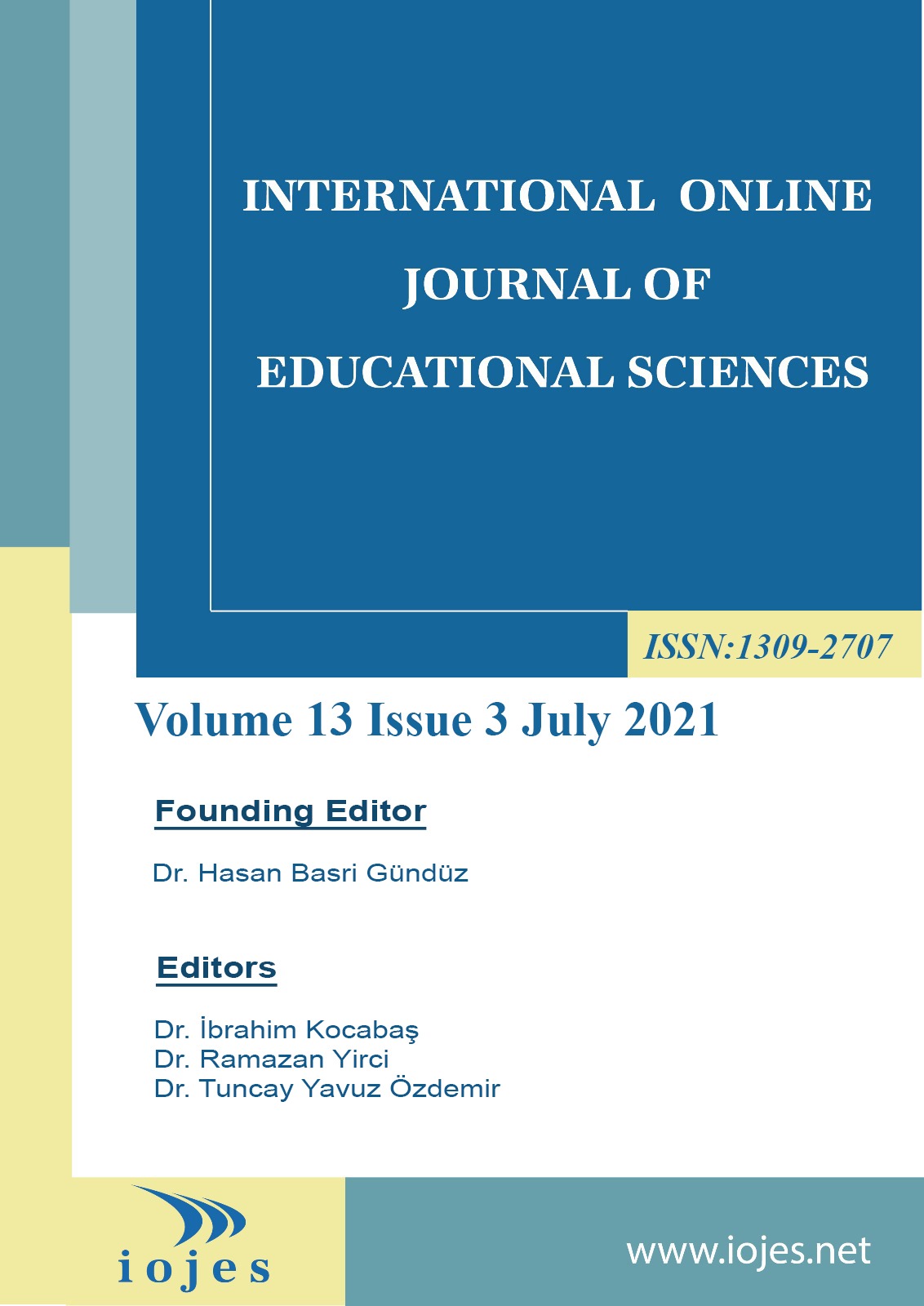Determination of Vocational School Students' Attitudes Towards Distance Education in Terms of Various Variables During the Covid 19 Pandemic Process
Author :
Year-Number: 2021-Volume 13, Issue 3
Yayımlanma Tarihi: 2021-05-25 13:57:00.0
Language : English
Konu : Educational Sciences
Abstract
Keywords
Abstract
Keywords
- Adnan, M. & Anwar, K. (2020). Online learning amid the covıd-19 pandemic: students' serspectives. Journal of Pedagogical Sociology and Psychology, 2(1), 45-51.
- Badu-Nyarko, S. K. (2006). Faculty attitudes towards aistance aducation: a review of the literature. Internatıonal Journal Of Instructıonal Technology And Dıstance Learnıng, 3 (5), 59-71.
- Bates, A.W. (2005). Technology, e-learning and distance education. Routledge (London & New York). Retrieved November 20, 2020, from https://books.google.com.tr/books?hl=tr&lr=&id=w8xIPSTfZBUC&oi=f nd&pg=PP8&dq=distance+education&ots=fRchpBfMW2&sig=k81Voh8CiSltVGbV4iWaDQGW98k&re dir_esc=y#v=onepage&q=distance%20education&f=false
- Coelho, F. A. et al. (2018). Evidences of validity of the Brazilian scale of learner's attitude towards distance education programs. International Journal of Information and Communication Technology Education, 14(1), 1-16.
- Gömleksiz, M. N. & Pullu, E. K. (2020). Meslek yüksekokulu öğrencilerinin uzaktan eğitime ilişkin görüşleri. Turkish Studies, 15(6), 477-502.
- Halder, U. K. (2012). A study on distance learners' attitude towards distance education. Indian Streams Research Journal, 2(7).
- Holmberg, B. (2005). Theory and practice of distance education. Routledge ( London & New York). Retrieved November 25, 2020, fromhttps://books.google.com.tr/books?hl=tr&lr=&id=AgiIAgAAQBAJ&oi= fnd&pg=PP1&dq=distance+education&ots=ETf4sBvyUx&sig=BOh3bJ4BPVjUgfaGP33wKzYfgHs&redi r_esc=y#v=onepage&q=distance%20education&f=false
- Işık, A. H., Karakış, R. & Güler, İ. (2010). Postgraduate students’ attitudes towards distance learning (The case study of Gazi University). Procedia Social and Behavioral Sciences, 9, 218–222.
- Kaye, A. (1981). Origins and structures. Anthony (Tony) Kaye ve Greville Rumble (Eds), in Distance Teaching For Higher and Adult Education. London: Routledge.
- Keegan, D. (1986). The foundations of distance education. Kent, UK.: Croom Helm. Retrieved December 01, 2020, https://books.google.com.tr/books?hl=tr&lr=&id=nYkrTWDj5twC&oi=fnd&pg=PP13&dq=distance+ed ucation&ots=UQJ6kpdy90&sig=2cmeZvEMNFK0qcCik2kQfVe3xEk&redir_esc=y#v=onepage&q=dista nce%20education&f=false
- Kentnor, H.E. (2015). Distance education and the evolution of online learning in the United States. Curriculum and Teaching Dialogue, 17(1), 21-34.
- Kışla, T. (2016). Uzaktan eğitime yönelik tutum ölçeği geliştirme çalışması. Ege Eğitim Dergisi, 17(1), 258-271.
- Kim, J. (2020). Learning and teaching online during covid-19: experiences of student teachers in an early childhood education practicum. International Journal of Early Childhood, 52, 145–158.
- Moore, M.G. (2016).Toward a theory of ındependent learning and teaching. The Journal of Higher Education, 44(9), 661-679.
- Nasser, R. & Abouchedid, K. (2000). Attitudes and concerns towards distance education: the case of lebanon. Online Journal of Distance Learning Administration, III (IV).
- Nenko, Y., Кybalna, N. & Snisarenko, Y. (2020). The covıd-19 distance learning: insight from Ukrainian students. The Brazilian Scientific Journal of Rural Education, 5.
- Panda, S. & Mishra, S. (2007). E‐Learning in a mega open university: faculty attitude, barriers and motivators. Journal Educational Media International, 44(4).
- Seaman, J. E.,Allen, I.E. & Seaman, J. (2018).Grade increase: tracking distance education in the united states. Retrieved January 16, 2021, https://files.eric.ed.gov/fulltext/ED580852.pdf
- Shawaqfeh, M. S., Al Bekairy, A. M., Al-Azayzih, A., Alkatheri, A. A., Qandil, A. M., Obaidat, A. A., Al Harbi, S. & Muflih, S. M. (2020). Pharmacy students perceptions of their distance online learning experience during the covıd-19 pandemic: a cross-sectional survey study. Journal of Medical Education and Curricular Development.
- Siaciwena, R. M. C. (1989). Staff attitudes towards distance education at the University of Zambia. International Journal of E-Learning & Distance Education, 4(2), 47-62.
- Simonson, M., Schlosser, C. & Hanson, D. (1999). Theory and distance education: a new discussion. The American Journal of Distance Education, 13(1).
- Simonson, M., Zvacek, S.M. & Smaldino, S. (2019). Teaching and Learning at a Distance Foundations of Distance Education 7th Edition. Information Age Publishing. Retrieved December 05, 2020, https://books.google.com.tr/books?hl=tr&lr=&id=qh3DwAAQBAJ&oi=fnd&pg=PR1&dq=distance+education&ots=EdwcDdkDJ&sig=AUiDDsQfa_elVb2n30MqFu5FuEQ&redir_esc=y#v=onepage&q=distance%20education&f= false
- Sun, L., Tang, Y. & Zuo, W. (2020). Coronavirus pushes education online. Retrieved February 10, 2021, https://www.nature.com/articles/s41563-020-0678-8
- Tabata, L. N. & Johnsrud, L. K. (2008). The impact of faculty attitudes toward technology, distance education, and innovation. Research in Higher Education, 49 (625).
- Vicari, R. & Silveira, R. A. (2006). Distance education and lifelong learning. Retrieved December 8, 2020, https://www.researchgate.net/publication/46298677_Distance_Education_and_Lifelong_Learning
